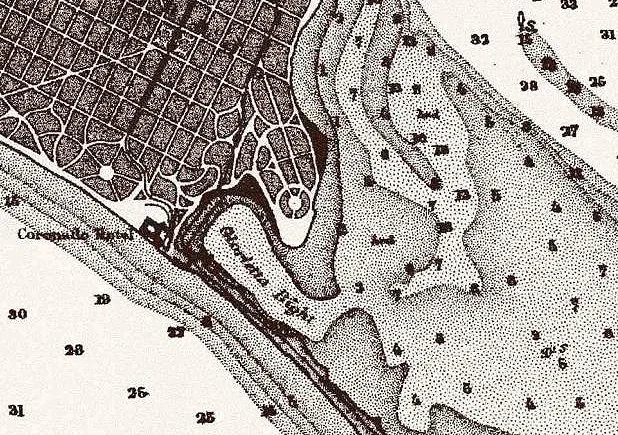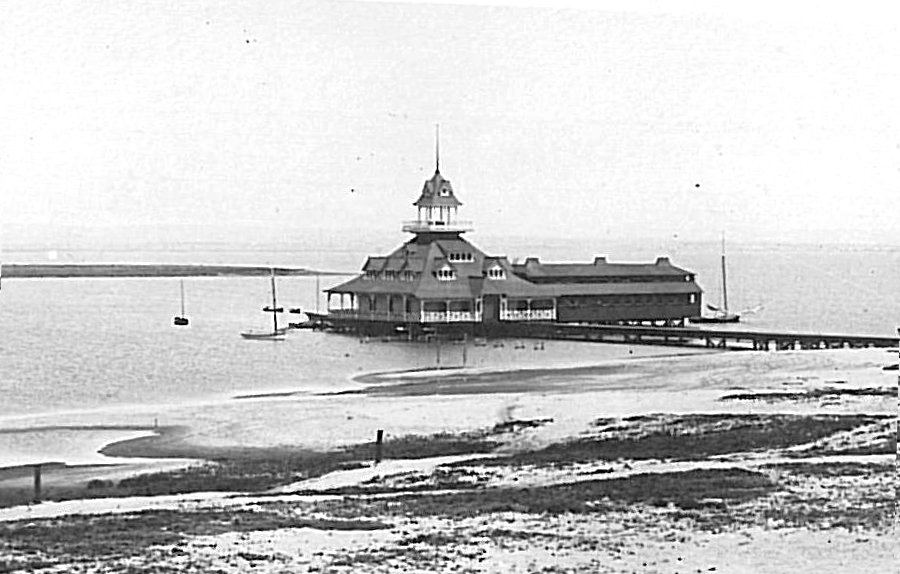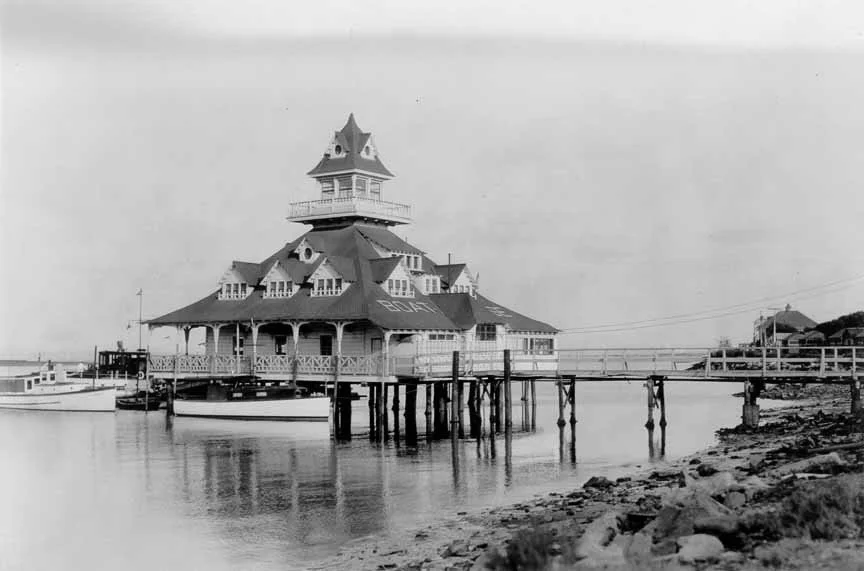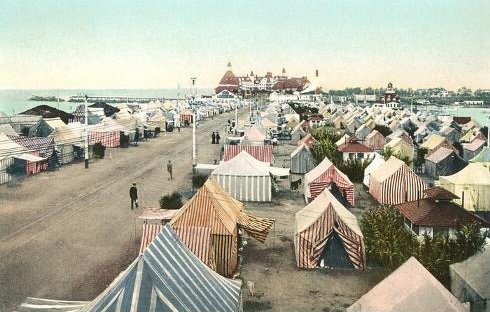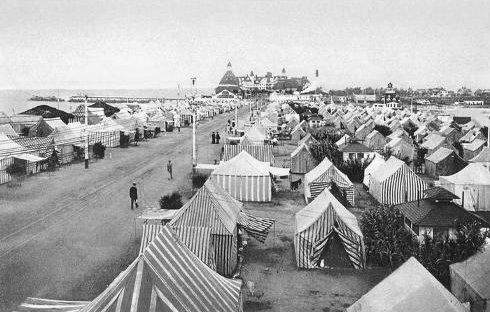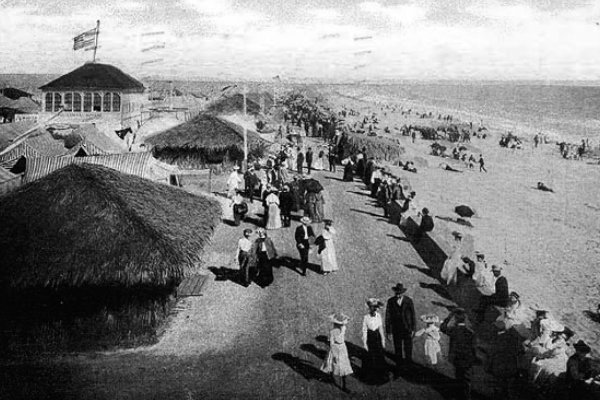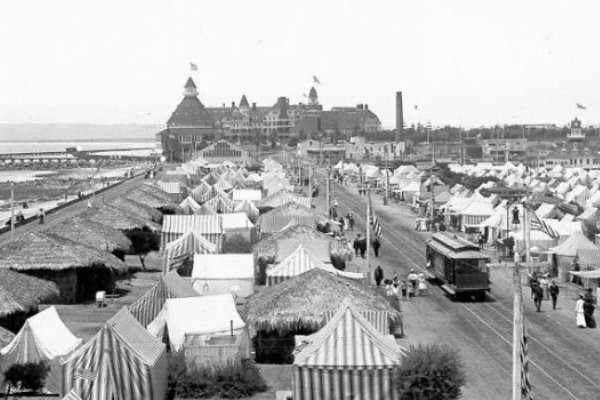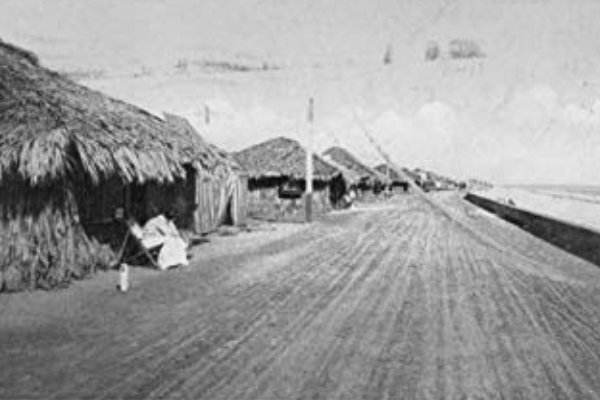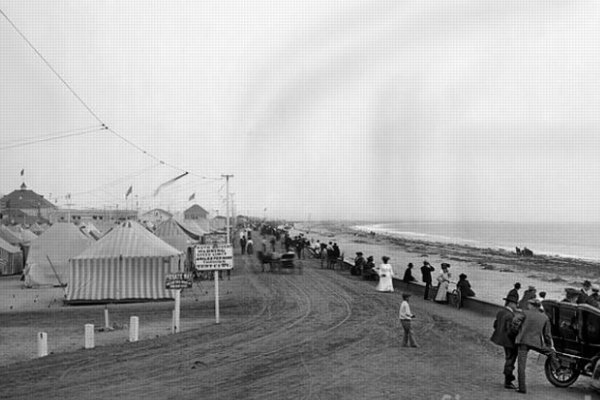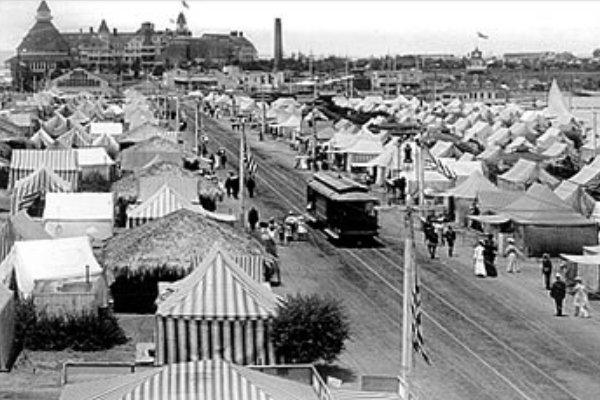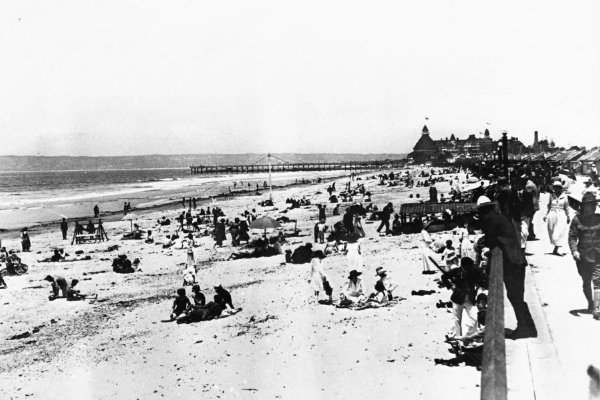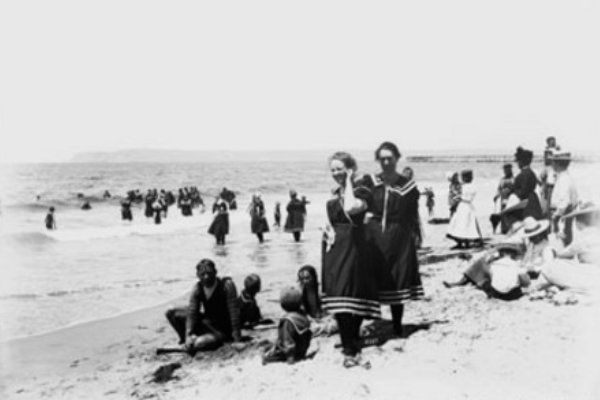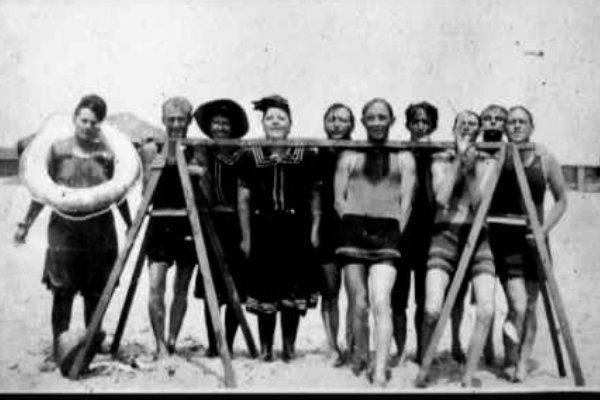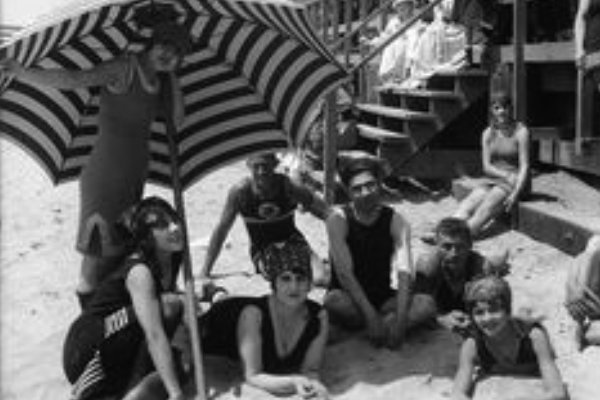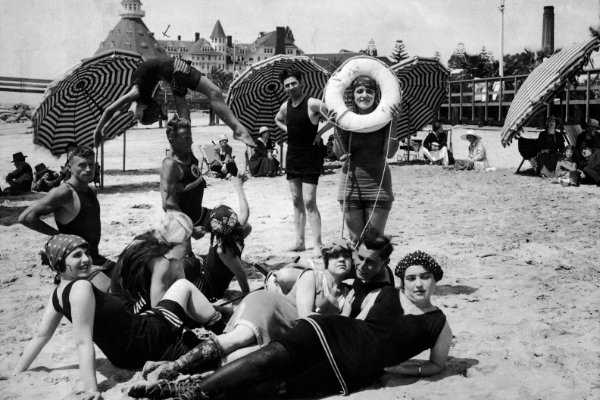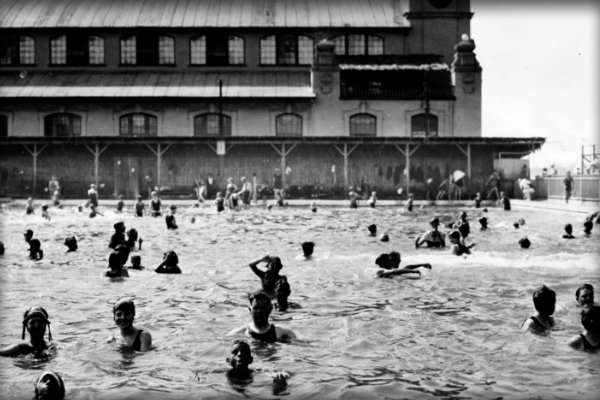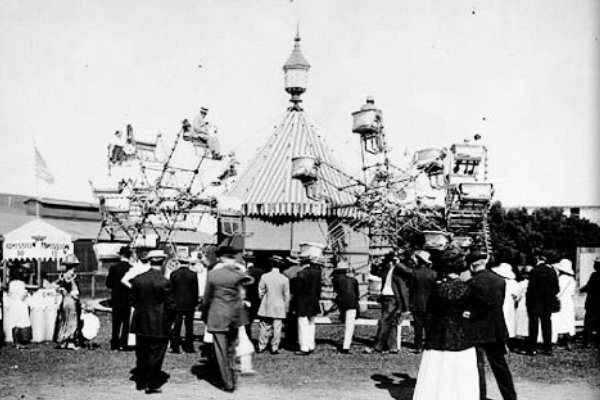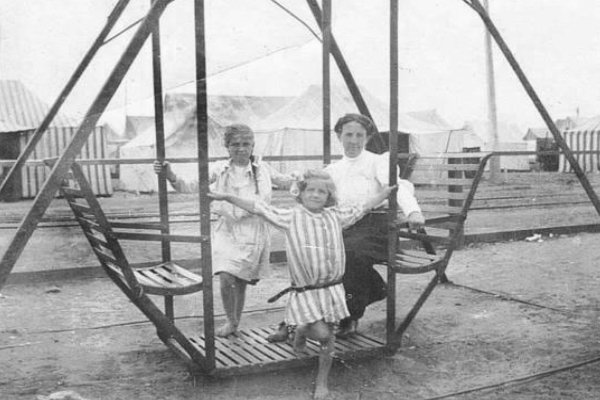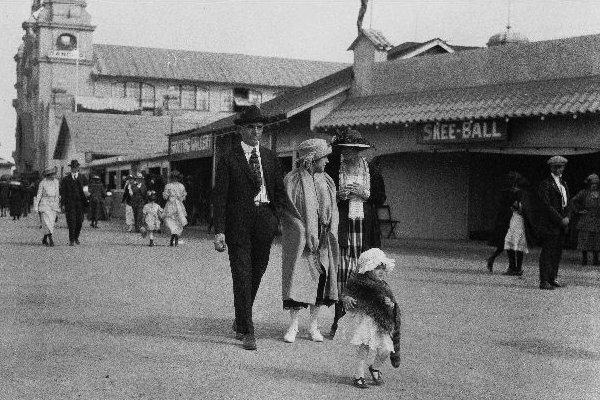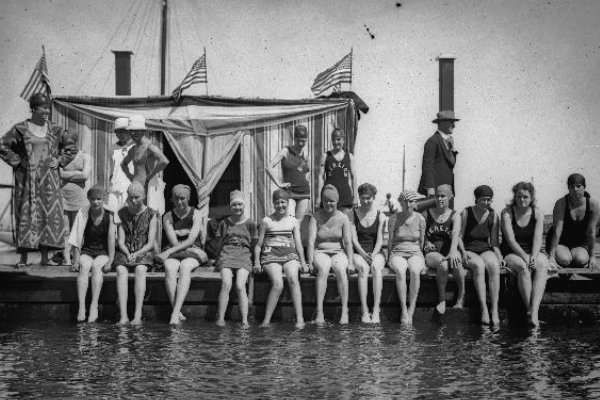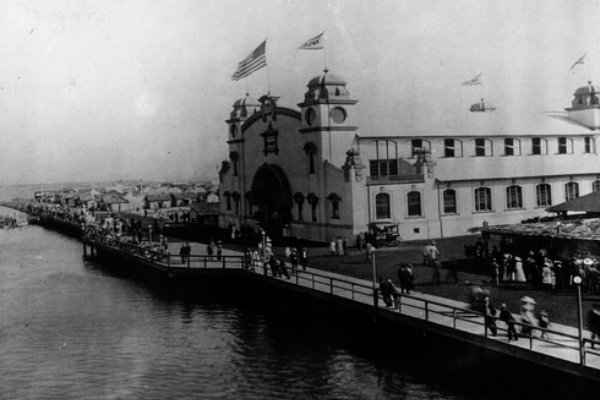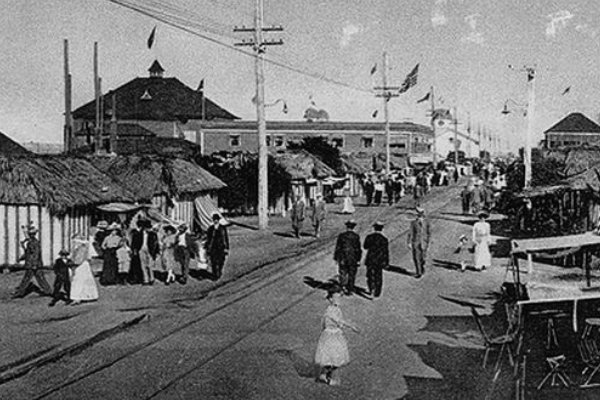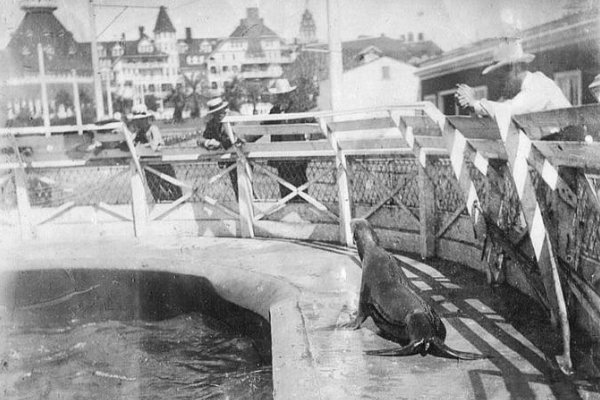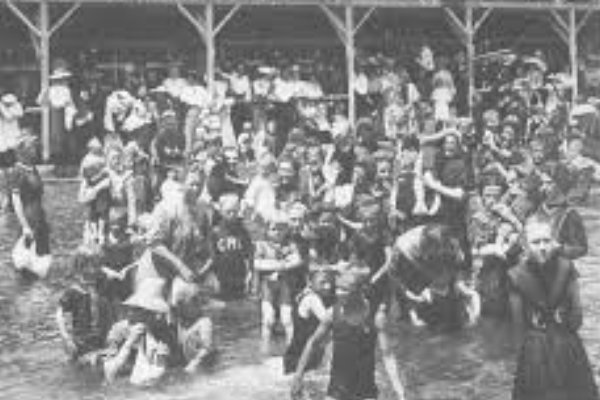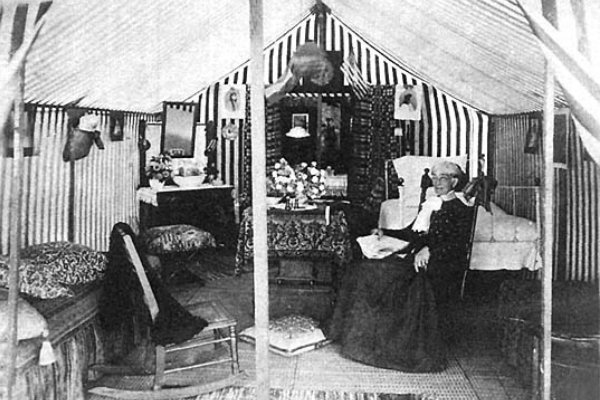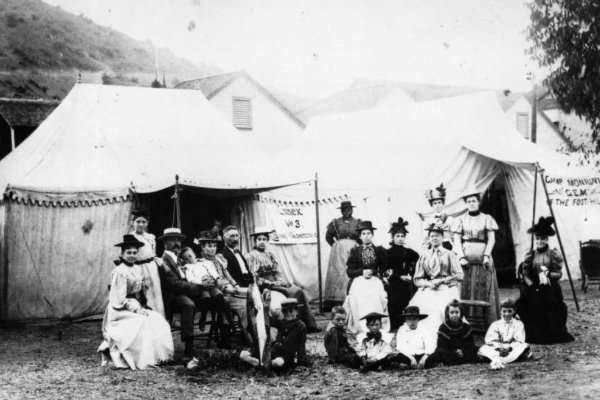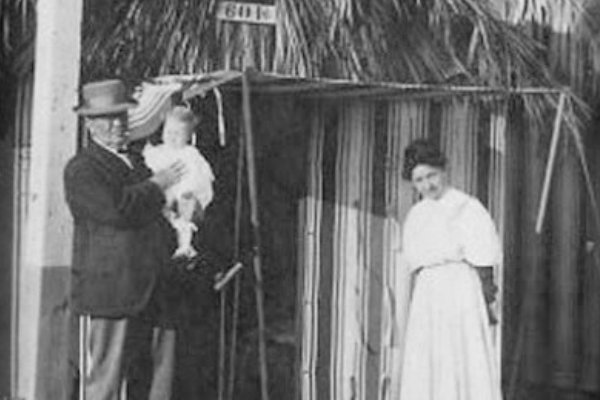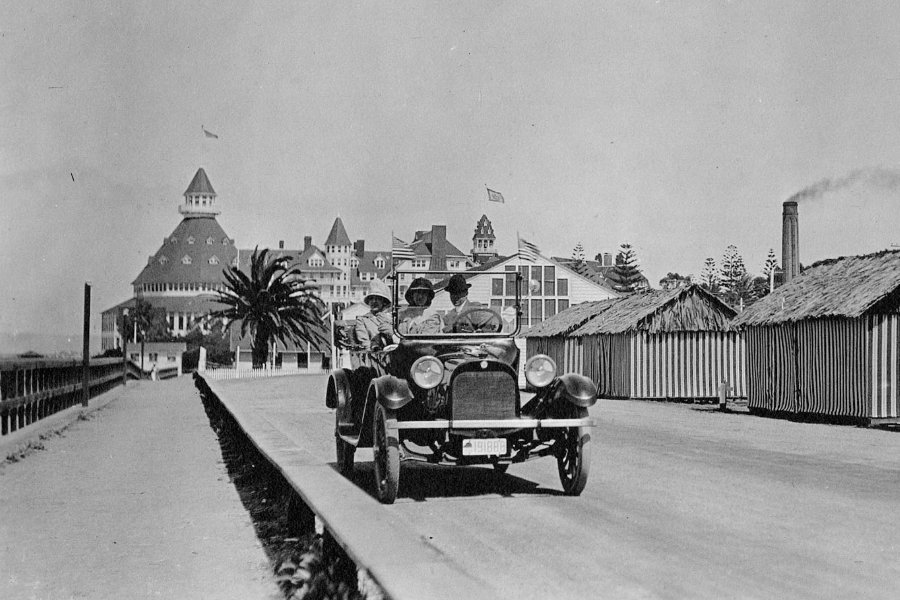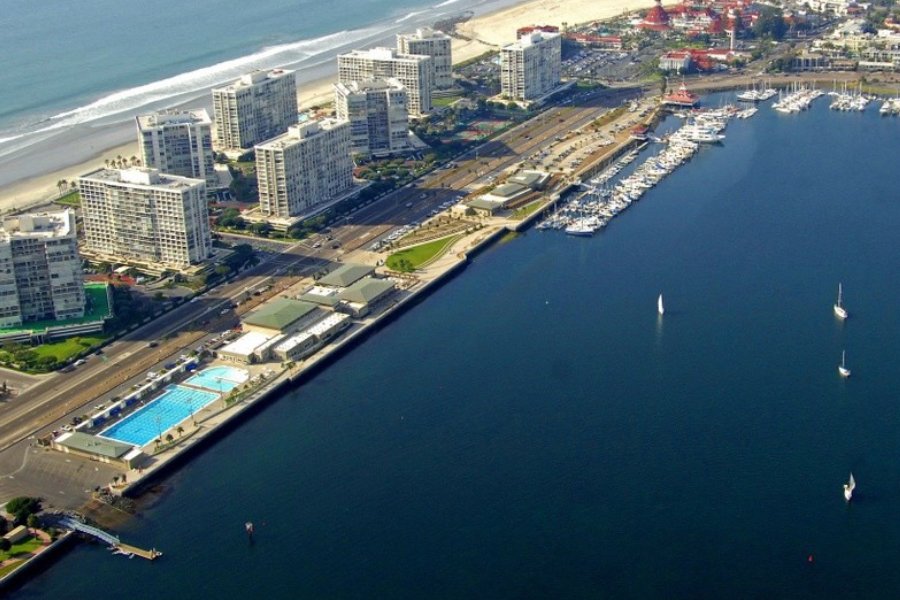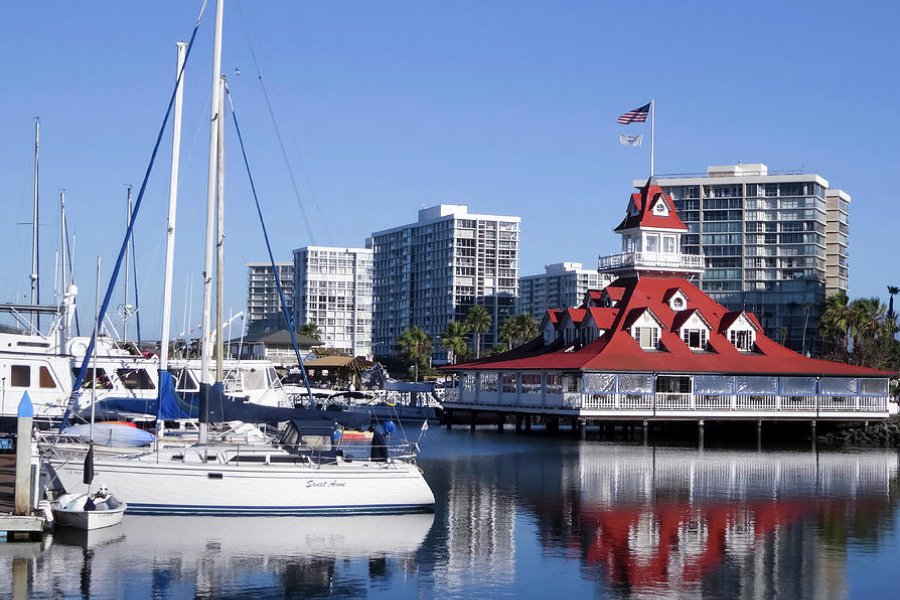Hotel Boathouse & Historic Tent City
Glorietta Bay / Coronado Yacht Club
Coronado’s Historic Boathouse
As one of Coronado’s most familiar architectural landmarks, the Boathouse is recognized as a Coronado Historical Landmark, and remains a testament to San Diego’s prosperous history.
Operating today as the Bluewater Boathouse restaurant (formerly the Chart House restaurant), it has established itself as one of Coronado’s favorite steak and seafood restaurants.
Originally constructed in 1887, just prior to breaking ground on the Hotel del Coronado, it is one of only a few historic structures that has survived new development through the years.
History of The Coronado Boathouse
Location: Glorietta Bay
In the early days, Glorietta Bay was a sandy, undeveloped beach with low-tide mud banks along the shoreline. It was known as Glorietta Bight.
A bight is best described as a coastline extending at a very shallow angle. Simply put, Glorietta Bight was a very shallow bay at high-tide, and a muddy sand bank at low-tide.
In fact, it was so shallow, that the builders of the Hotel del Coronado chose to transport the hotel’s heavy lumber across the island from the Ferry Landing rather than trying to barge the materials into the shallow bight, which is much closer to the hotel’s building site.
The Boathouse structure is remarkably similar to that of the Hotel del Coronado, and for good reason.
Skilled laborers were hard to find during the building boom in San Diego, so Chinese laborers were brought down from the San Francisco area. Since these laborers were new to Del’s ‘Victorian style’ architectural design, it is believed that Boathouse provided training to the workers hired to build the Hotel.
Its original construction incorporated a bath house and bathing tanks that are thought to have been used by workers during the Hotel’s construction, and then by guests of the Hotel & Tent City.
After the Hotel opened in 1888, the hotel organized the “Coronado Boating Club” to promote its recreational services in Glorietta Bight.
The hotel’s first boats were shallow-draft paddling boats known as ‘Swan Boats’, but the hotel also bought 12 small sailboats for its Boathouse.
Unfortunately, these boats would lie high and dry at their moorings during low tide, a sad sight for the developers of the Hotel Del who had envisioned festive boating, races, or picnic suppers on the bay for its guests.
The Hotel’s owners initially dredged a 10 foot deep channel through Glorietta Bight that included a circular turning area near the Boathouse. This enabled the Boathouse guest boats to operate regardless of the tides.
And the dirt/mud from the dredging was be used to shape the shoreline. With this new shoreline development, the vision for recreational boating became reality, and a Bight became a Bay.
The Boathouse has been home to many notable ventures in its 135 year life span.
The ‘Bathing Tanks’ section of the BoatHouse was eventually removed.
In 1903, it was the home base for William E. Ritter’s marine research, who later went on to found the Scripps Institute of Oceanography in La Jolla.
In 1912, the Coronado Yacht Club established its first headquarters at the Boathouse, followed by the San Diego Yacht Club in 1920.
In the 1960’s, the bay was further dredged and the mud/dirt was deposited on the South shoreline of Coronado, creating the bridge landing, 137 acre golf course, and what would later become Coronado Tidelands Park and the Marriott Resort & Spa.
In 1968, the Boathouse was structurally renovated and moved seventy feet closer into the shoreline, becoming a restaurant as it is today.
‘Coronado Tent City on San Diego Bay’
An Affordable Vacation Destination for working Class
Coronado Expansion
The narrow peninsula just South of the Hotel del Coronado, adjacent to the Boathouse, is one of a few areas on Coronado that had not been sold as private home lots to raise money for the hotel’s construction.
The Del had been operating successfully for nearly a decade and the effects of San Diego’s real estate bust in the early 1890’s were in the rearview mirror.
Hotel del Coronado owner, John D. Spreckles had long considered how exactly to develop the prime real estate property & beaches.
Railways create Nationwide travel
By the late 1890’s, vacation travel by new railway lines from all over the United States was affordable, and San Diego became a popular destination for families to summer by the seashore.
But the Hotel del Coronado was expensive for the common ‘working class’ family. Beach tents and camping were an affordable alternative to the famed Hotel.
Some say the idea came from the earlier tents that housed workers during the construction of the hotel.
In 1900, tents with red-and-white canvas were erected along the empty beach and offered for camping. While Speckles was not completely convinced a summertime campground would be a profitable investment, its unimaginable success proved him wrong.
By 1903, nearly a 1,000 families flocked to the area to rent tents on the beach and Coronado Tent City was born.
It was a smashing success and fueled the growth of Coronado’s economy with new businesses, restaurants, a soda fountain, a grocery store and merchant shops.
Photo Galleries - Click to advance photos.
Quickly becoming one of the coast’s most popular resort destinations, Tent City drew over 10,000 visitors during the summer season of 1914.
Its grid of dirt streets along the railway eventually became well-worn thoroughfares. Tents became palmleaf-covered cottages with furnishings for comfort. An early brochure described the accommodations that today would be considered glamorous camping (glamping).
“A furnished tent comprises electric lights, matting on boarded floor, comfortable beds and cots, bedding, wash-stand, mirror, tables, chairs, rockers, camp-chairs and stools, necessary cooking utensils, clean linen, daily care of tent, and laundry service of tent linen.”
Entertainment included an arcade and shooting gallery, theatre that showed early films as well as live performances, bandstand, and dance pavilion. Guests enjoyed a seal tank, ostrich farm and monkey cages. Managers even held children’s bullfights.
For those who tired of swimming in the ocean, there was a large ‘open air’ swimming pool. The Carousel was a favorite feature and today is located at San Diego’s historic Balboa Park.
Like all well-run cities, they had a police department to keep the peace as well as a lock-up. Residents kept up-to-date on events with the daily Coronado Tent City newspaper, as well as a local library.
Tent City Offered Luxury at Low Prices
Prices were geared to people who could not afford the luxury hotel to the North. Unfurnished 8-by-10-foot tents cost $1.50 to $2.50 per week. More luxurious tents cost $6 per week. Those included beds and linens, a washstand with towels and water, rocking chairs and a lamp. An add-on of electric lights cost $1 per month.
The Coronado Tent City was actually a sister project to one established on Catalina Island, just off Los Angeles.
By 1938, more San Diegan’s were traveling to Coronado by automobiles rather than railway trolleys. In 1939, the railway that ran the length of the peninsula (known as the Silver Strand) was removed in order to make way for a new highway (Hwy 75).
This marked the end of the historic Tent City and it’s business owners were encouraged to move to the business district along Orange Avenue.
The City of Coronado sold the beachfront property for private development, currently the Coronado Shores high-rise condos, and the Glorietta Bay shore was used for community development; City Hall, Community Center, Water & Recreation Center, Boat Ramp and Glorietta Bay Park.





